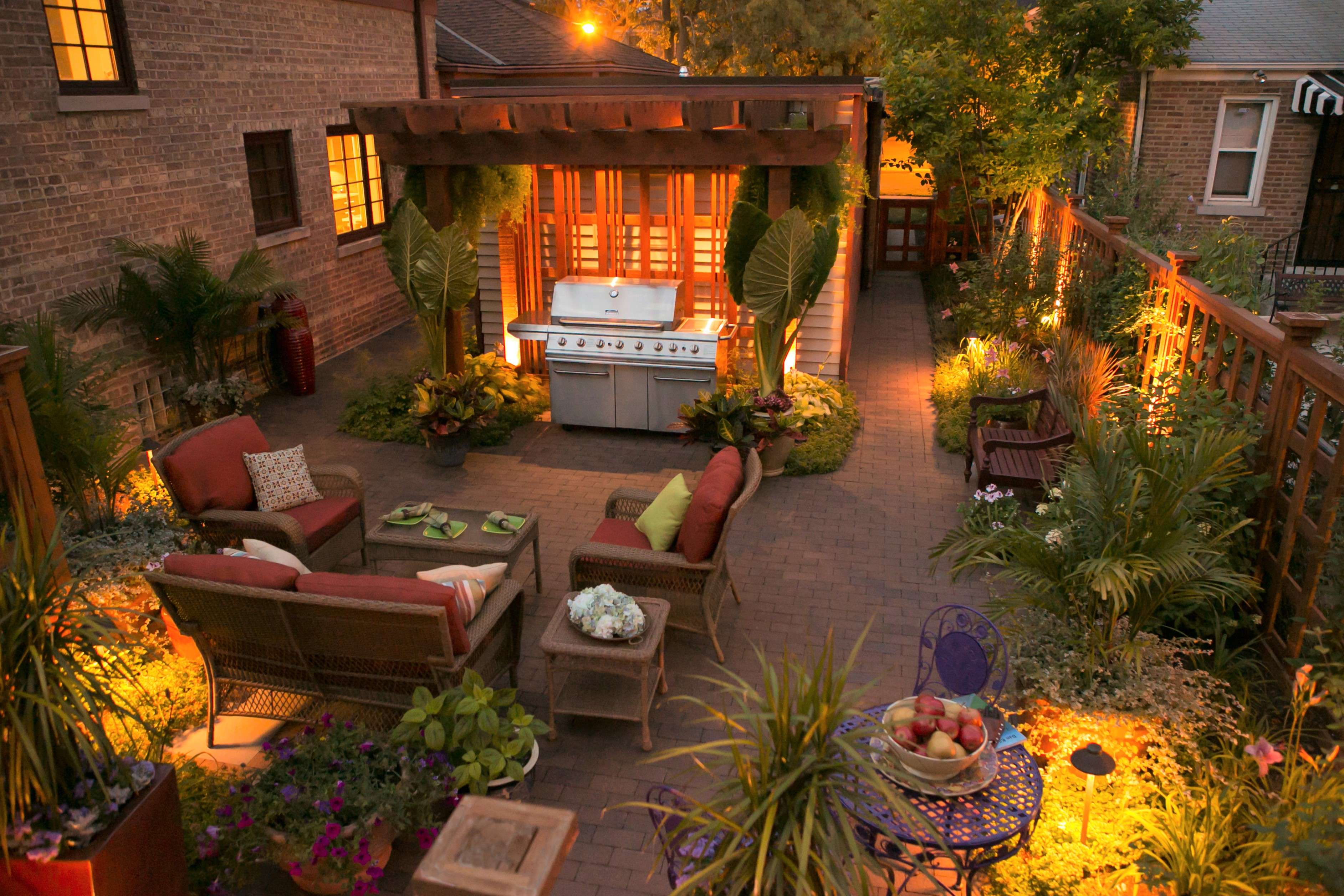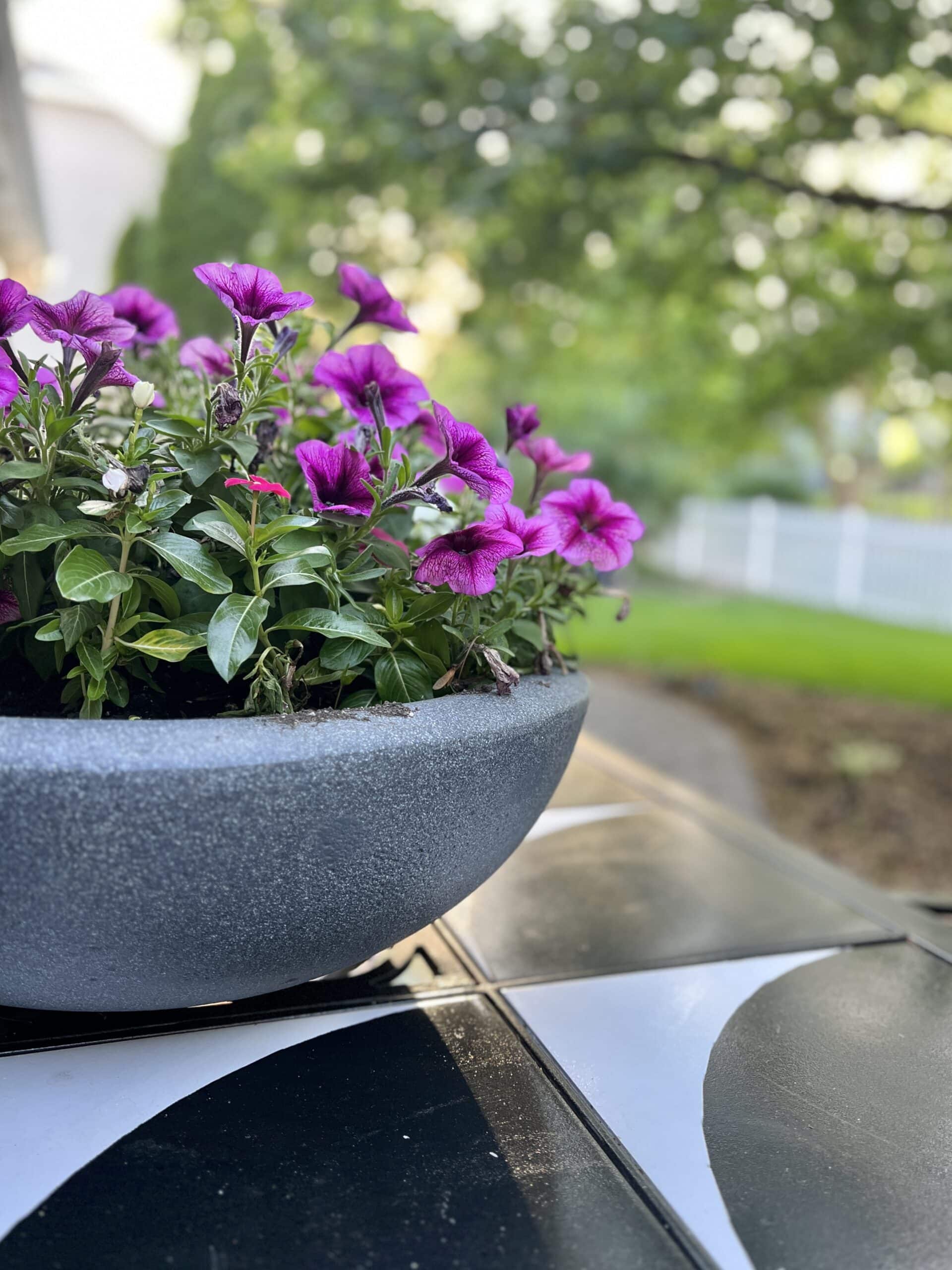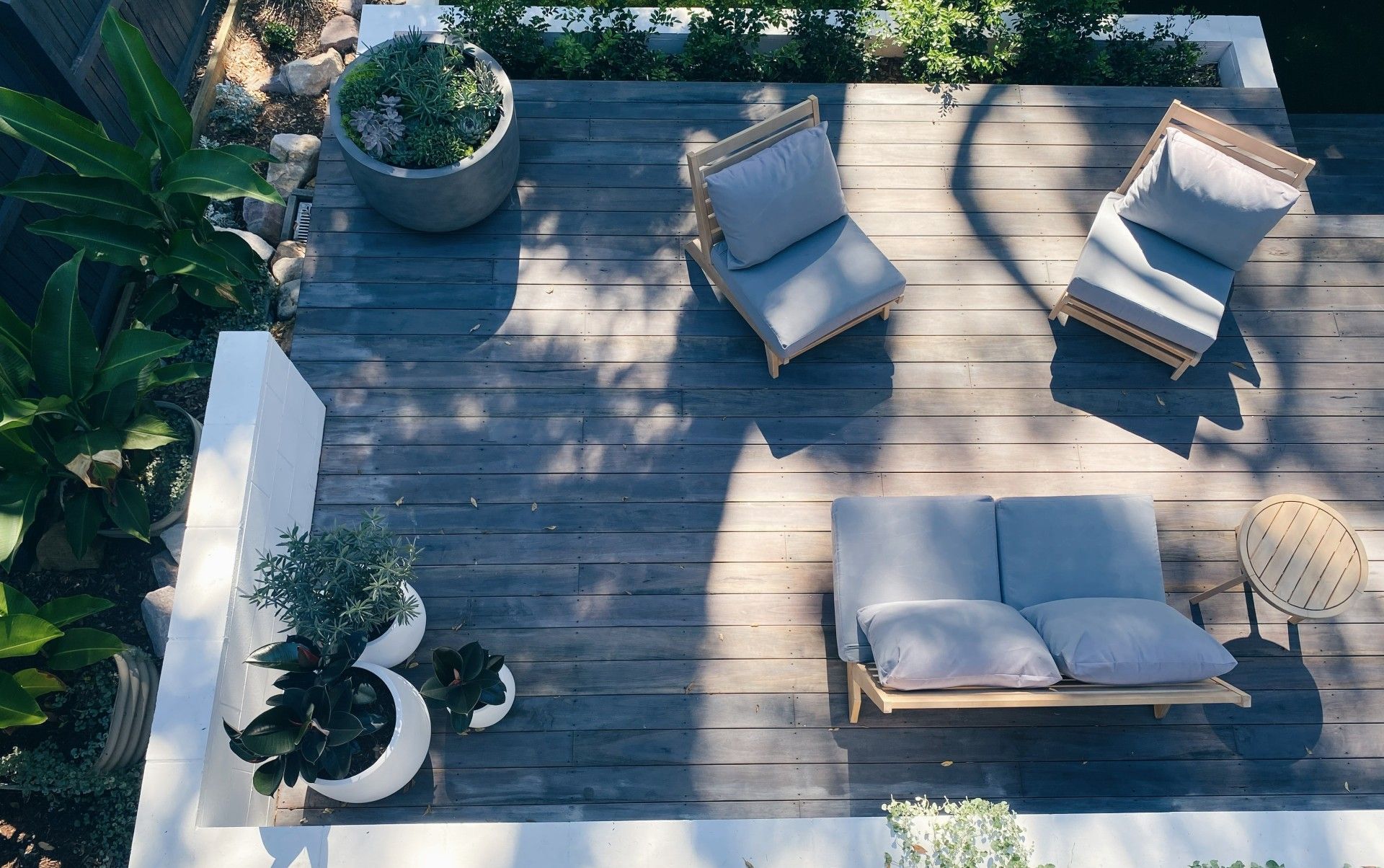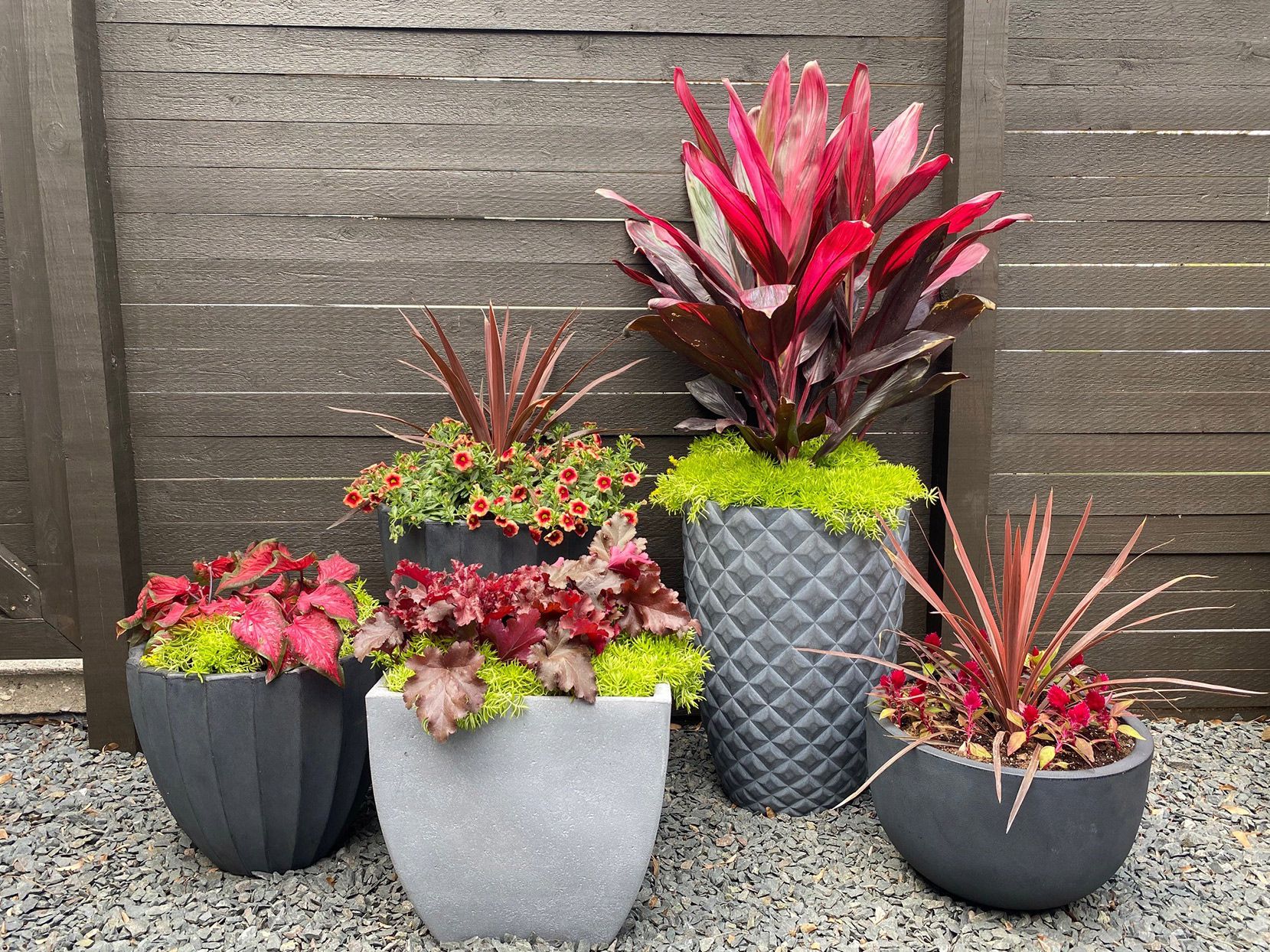Want to add a touch of green to your patio? Planting pots for your patio is a simple way to enhance its beauty.
Patios are perfect for relaxing and entertaining. Adding potted plants brings life and color to the space. You don’t need to be a gardening expert to create a beautiful patio garden. With the right tips and techniques, anyone can do it.
Whether you have a small or large patio, planting pots can transform your outdoor area. Let’s explore how you can easily plant pots for your patio and enjoy a vibrant, green space.

Credit: kdlandscapeinc.com
Choosing The Right Pots
Selecting the right pots for your patio can greatly enhance the beauty of your outdoor space. Choose pots that complement the size and style of your patio. Ensure they have proper drainage to keep your plants healthy.
Material Options
Choosing the right material is important. Clay pots are classic and porous, but can break easily. Plastic pots are lightweight and affordable, but may not last as long. Ceramic pots are beautiful and durable, but often heavy. Metal pots look modern, but can get very hot in the sun. Wooden pots are natural and sturdy, but may rot over time. Think about the pros and cons before deciding.
Size And Shape
Size matters for plant growth. Small pots are good for herbs. Large pots are better for bigger plants. Shape affects root space. Tall pots are great for deep roots. Wide pots work well for plants that spread. Choose wisely for your patio plants.
Selecting Suitable Plants
Select plants that thrive in containers for a patio garden. Consider sunlight, water needs, and plant size to ensure healthy growth.
Climate Considerations
Choosing the right plants for your patio depends on your climate. Tropical climates suit plants like ferns and palms. Dry climates are great for succulents. Always check the plant’s water and sunlight needs. Some plants need shade, others need full sun. Knowing your climate helps plants thrive.
Plant Types
Herbs are great for small spaces. Basil, mint, and thyme grow well in pots. Flowers like petunias and marigolds add color. Vegetables like tomatoes and peppers can also be grown in pots. Choose plants that match your patio’s light and space. Happy planting!
Preparing Potting Soil
Good potting soil needs three main components. First, peat moss helps to hold water. Second, perlite keeps the soil light. Third, compost adds nutrients. These parts make a strong mix for plants. Each part plays a key role. Peat moss keeps soil moist. Perlite ensures air reaches roots. Compost feeds the plants.
Drainage is very important for potted plants. Without drainage, plants can get too much water. This can rot roots. Always use pots with holes at the bottom. Add small rocks or gravel at the base. This helps water flow out. Healthy roots need good drainage. Plants grow better with the right balance of water.
Planting Techniques
Place taller plants in the center of the pot. This gives a balanced look. Use smaller plants around the edges. This makes the pot look full. Ensure plants have similar water needs. This helps them grow well together. Do not overcrowd the pot. Plants need space to breathe and grow. Rotate the pot often. This ensures all plants get sunlight.
Check roots before planting. Healthy roots are white and firm. Gently loosen the roots. This helps them spread in the soil. Cut off any damaged roots. They can hurt the plant’s health. Water the plant after potting. This helps settle the soil. Ensure the pot has drainage holes. This prevents root rot.
Watering Guidelines
Watering potted plants on the patio is important. Most plants need water every 2-3 days. Hot weather means more frequent watering. Check the soil often. If the top inch is dry, water the plant. Early morning or late afternoon is best. This helps reduce evaporation. Use a watering can with a narrow spout. This targets the base of the plant.
Overwatering can harm plants. Signs include yellow leaves and soggy soil. Mold or fungus may appear on the soil. Plants may look wilted even if the soil is wet. Root rot is a serious problem. Overwatering can lead to this. Always check soil before watering. Let the soil dry out between watering sessions. This helps prevent overwatering.
Fertilizing Tips
For planting pots on the patio, use high-quality potting soil. Fertilize regularly with a balanced, water-soluble fertilizer. Ensure proper drainage to avoid root rot.
Choosing Fertilizers
Pick the right fertilizer for your plants. There are many types. Organic fertilizers are good for the environment. They help the soil stay healthy. Chemical fertilizers work fast. They give quick results. Read the labels carefully. Look for the N-P-K ratio. It shows the amounts of nitrogen, phosphorus, and potassium. These are key nutrients for plants. Choose a balanced fertilizer for most plants. Some plants need special types. Ask at your local garden store.
Application Methods
Apply fertilizer the right way. Follow the instructions on the package. Do not use too much. This can harm your plants. Spread the fertilizer evenly. Mix it into the soil. Water the plants after fertilizing. This helps the nutrients reach the roots. Use a watering can or hose. Do not fertilize too often. Once a month is enough for most plants. Some plants need less. Watch your plants. They will show signs if they need more nutrients.
Pest And Disease Management
Common pests include aphids, spider mites, and whiteflies. These pests can harm your plants. They suck the sap from leaves. This weakens the plants. Look for tiny bugs on leaves. Check for webbing or sticky residue.
Use neem oil to deter pests. Spray it on leaves once a week. Keep plants healthy and well-watered. Healthy plants resist pests better. Remove any dead or infected leaves. This stops pests from spreading.

Credit: www.sonatahomedesign.com
Seasonal Care
Create vibrant patio pots by selecting a mix of colorful flowers and green plants. Ensure proper drainage using pebbles at the bottom. Water regularly to keep plants healthy and thriving.
Winter Protection
Winter can be harsh for potted plants. Move pots indoors if possible. If not, group them together for warmth. Wrap pots with burlap or bubble wrap. This helps insulate them. Cover soil with mulch to retain heat. Water sparingly to prevent freezing. Check for frost damage regularly. Keep plants away from strong winds. Use a frost blanket if necessary. This ensures plants stay safe and healthy.
Summer Maintenance
Summer heat can stress plants. Water them early in the morning. This helps prevent water loss. Use pots with drainage holes. This avoids waterlogging. Place pots in shaded areas if too hot. Add mulch to retain moisture. Check soil daily for dryness. Fertilize plants every two weeks. This keeps them nourished. Trim dead leaves and flowers. This encourages new growth. Monitor for pests and treat promptly.
Design And Arrangement
Pick colors that match your patio. Bright colors like red and yellow can make your space lively. Soft colors like blue and green create a calm feel. Use a mix of flowers and leaves for a balanced look. You can also use neutral pots to highlight colorful flowers. Keep it simple. Too many colors can look messy.
Use pots of different heights. Tall plants at the back, short ones in front. It adds depth to your patio. Layering makes your plants more interesting. Choose plants that grow well in pots. Group them by height for a neat look. You can also use plant stands to add height.

Credit: www.sproutl.com
Long-term Maintenance
Ensure plants thrive with regular watering, pruning, and fertilizing. Protect pots from extreme weather to prolong their life.
Pruning And Trimming
Regular pruning and trimming keeps your plants healthy. Remove dead or yellow leaves. This helps new growth. Trim overgrown branches. It makes plants look neat. Use clean tools. Dirty tools can harm plants. Check plants often. Look for signs of disease. Act quickly to remove any infected parts. Healthy plants grow better and look beautiful.
Repotting Needs
Plants in pots need repotting. Roots grow and need more space. Choose a pot one size bigger. Add fresh soil. It gives nutrients. Gently remove the plant from the old pot. Be careful with roots. Place it in the new pot. Fill with soil. Water well. Do this every 1-2 years. It helps the plant thrive.
Frequently Asked Questions
What Are The Best Pots For Patios?
The best pots for patios are durable, weather-resistant, and complement your outdoor decor. Consider materials like ceramic, terracotta, or resin. Ensure proper drainage to prevent waterlogging and choose the right size for your plants.
How To Choose Plants For Patio Pots?
Choose plants based on your patio’s sunlight and climate. Opt for low-maintenance and drought-resistant varieties. Consider mixing flowers, herbs, and ornamental grasses for visual interest.
How Often Should I Water Patio Pots?
Water patio pots when the top inch of soil is dry. Frequency depends on plant type and weather. In hot weather, pots may need daily watering.
What Soil Is Best For Patio Pots?
Use high-quality potting soil for patio pots. It should be well-draining and nutrient-rich. Avoid garden soil, as it can be too compact.
Conclusion
Creating stunning patio pots is simple and rewarding. Select the right plants. Use quality soil. Ensure proper drainage. Place pots strategically for sunlight. Water regularly and check for pests. Enjoy your vibrant patio space. It’s a great way to enhance outdoor beauty.
Remember, patience and care yield the best results. Start small and watch your garden grow. Happy planting!

My mission is to help you bring the beauty of nature indoors with expert advice, detailed plant care guides, and creative design ideas.





Leave a Reply